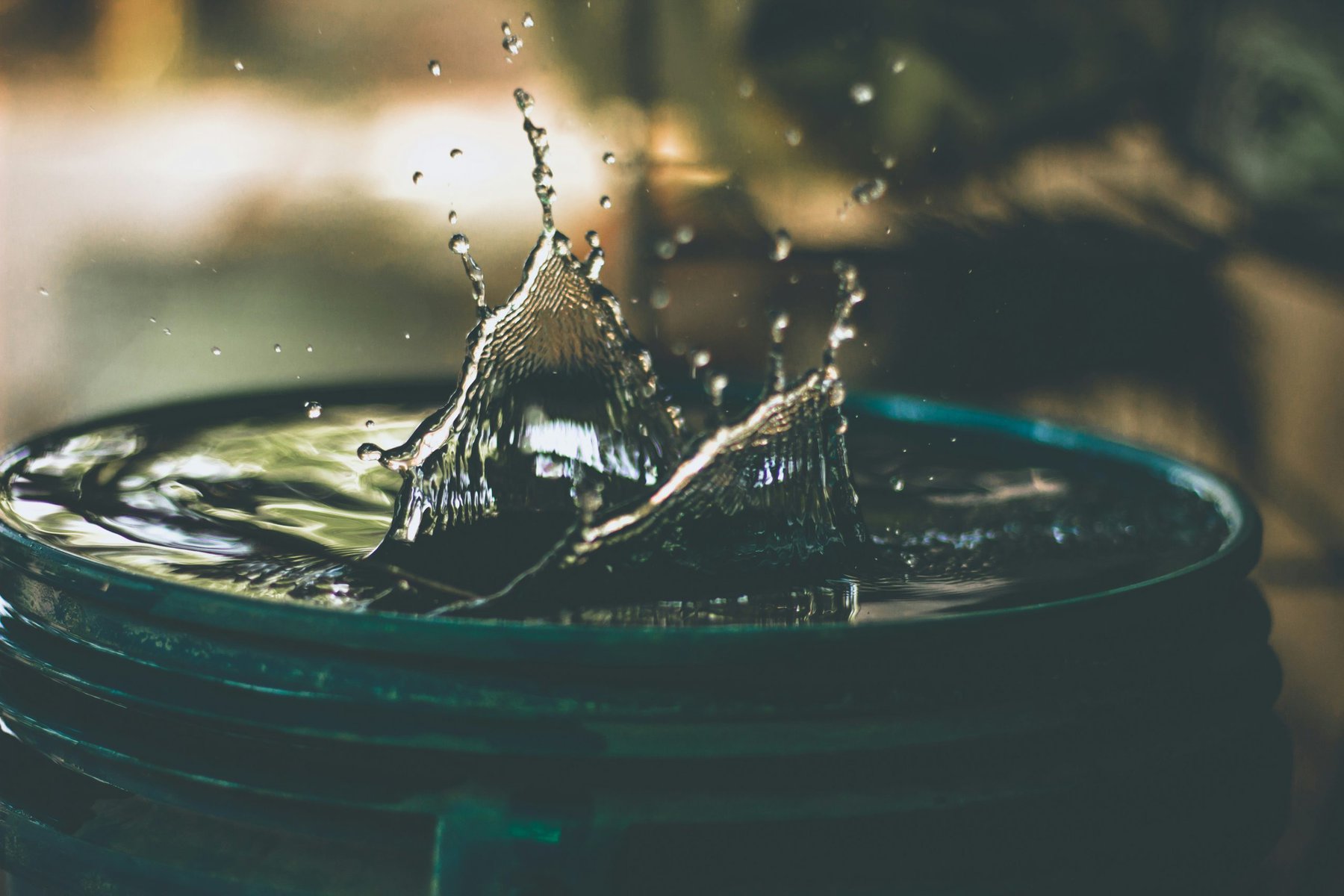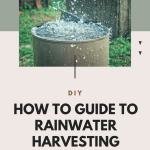With increasing concerns about water scarcity and the need for sustainable water management practices, rainwater harvesting has emerged as a crucial aspect of modern architecture. This is an in-depth exploration of rainwater harvesting, covering its principles, benefits, setup, collection techniques, utilization, and additional considerations.
Whether you just want to learn the rainwater harvesting definition or how rainwater is to be used or are looking for a beginner’s guide to rainwater harvesting this helps break it all down. Learn how to use the water collected, and make it a DIY project getting the appropriate rainwater harvesting supplies there are tons of rainwater harvesting ideas for you to review.
What is Rainwater Harvesting?
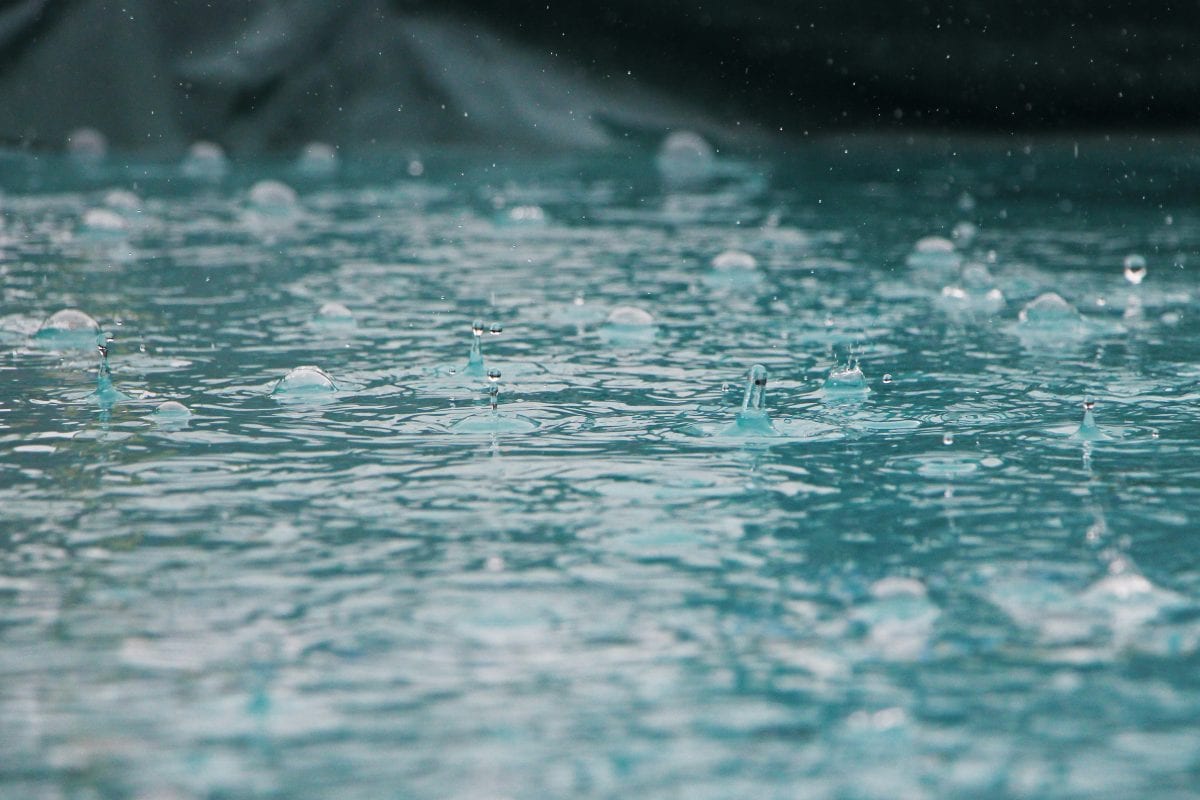
Rainwater harvesting is the process of collecting, storing, and utilizing rainwater that falls on roofs, lands, and other surfaces. It involves the use of a system to gather the rainwater and channel it to a storage rainwater harvesting tank for future use. Capturing the rainwater before it goes into the gutters and sewer systems, not only helps your pocketbook when it comes to watering your garden but also the environment. Sadly not all cities have the correct infrastructure to capture rain properly to use when water is scarce or to help offset the use of public water.
Rainwater harvesting is the practice of collecting and storing rainwater for future use. The process of capturing rainwater from rooftops or other surfaces and directing it into the size of the tank you need or underground reservoirs. This collected rainwater may be used for various purposes such as irrigation, washing, and even drinking or potable water in some cases.
Rainwater harvesting systems typically include components such as gutters and downspouts to collect the rainwater, rainwater harvesting filter systems to remove debris and pollutants, storage tanks to hold the water, and a distribution system to use the harvested water to where it is needed. A rainwater harvesting simple explanation can be found here.
Types of Rainwater Collection
There are several methods of rainwater harvesting, including rainwater harvesting roof, surface runoff harvesting, and groundwater recharge. Rooftop harvesting is the most common method, where rainwater is collected from rooftops and directed into water storage tanks. Surface runoff harvesting involves capturing rainwater from open surfaces such as driveways or roads, while groundwater recharge involves recharging underground aquifers with the harvested rainwater.
Rainwater harvesting offers numerous benefits. Firstly, it helps to conserve water by utilizing rainwater that would otherwise go to waste. It reduces the demand for freshwater sources and helps to alleviate water scarcity in areas with limited access to clean water. Additionally, rainwater is free from many contaminants found in surface or groundwater sources, making it a more sustainable and environmentally friendly alternative.
Overall, rainwater harvesting is an effective and sustainable method of water conservation, helping to address water shortages and promote sustainable living practices. You can use the water in place of city or well water for drier periods.
How Does Rainwater Harvesting Work?
Rainwater is collected from roof surfaces or other catchment areas through gutters and downpipes and is then conveyed to a storage large tank for later use. Methods for harvesting rainwater include rooftop collection, surface runoff collection, and localized land-based catchment systems.
Rainwater harvesting is the process of collecting and keeping the rainwater that falls on rooftops, surfaces, or landscapes for future use. Here is a step-by-step explanation of how rainwater harvesting works:
1. Collection: The first step is to capture rainwater from a suitable surface such as rooftops, terraces, or open areas. The surface should be clean and free from any contaminants. A simple rain barrel is an easy way for rainwater storage.
2. Conveyance: Gutters or pipes are installed on the surface to capture and channel the rainwater to a storage system. These gutters should be sloped towards the storage to ensure efficient flow.
3. Filtration: The rainwater often contains debris, leaves, and other impurities. To remove these contaminants, a filtration system is used. Filtration methods can include using screens, mesh filters, or sedimentation tanks to separate solids from the water.
4. Storage: The filtered rainwater is then stored in containers like underground reservoirs that might require a rainwater harvesting pump, rain barrels, or tanks. The storage capacity varies depending on the amount of rainfall and the intended usage. It is important to choose storage that is watertight and protected from sunlight to prevent the growth of algae and mosquitoes.
5. Purification (optional): If the captured rainwater is intended for drinking or other potable uses, additional purification methods such as UV treatment, chlorination, or reverse osmosis may be necessary.
6. Distribution and use: The stored water can be used for various purposes such as irrigation, toilet flushing, laundry, cleaning, or even drinking (if properly treated). The water is distributed through a network of pipes connected to the storage system.
7. Maintenance: Regular maintenance is essential to ensure the proper functioning of the rainwater harvesting system. This includes periodic cleaning of gutters, filters, and storage tanks, as well as monitoring the water quality.
By implementing rainwater harvesting systems, individuals and communities can reduce their dependence on traditional water sources, conserve water, and contribute to sustainable water management. Not to mention reap the rainwater harvesting benefits but utilizing as much water as you can collect.
Read More: Perennial Gardens: 5 Beautiful Plants That Will Thrive Anywhere
Methods and Techniques to Collect Rainwater

There are various types of rainwater collection, whether you live in an area that has lots of rainwater or only get one inch of rain at a time, you too can use rainwater to help water your lawn and more in and around your home.
A rainwater harvesting system typically consists of a catchment area (roof), gutters, downpipes, a filtration mechanism, a storage tank, and a conveyance system. Using the different collection methods you can make a big difference with rain harvesting. Millions of gallons of rainwater go down the drain every year and collecting rainwater can help on the local level and beyond.
The use of underground tanks and other appropriate water systems is important here, water pressure might be needed depending on the type of tank you choose. When setting up your rainwater capturing systems it will be important to know how you will store and utilize the water.
What are the benefits of rainwater harvesting?
Rainwater harvesting offers numerous benefits and pros, such as reducing reliance on conventional water sources, lowering water bills, and providing supplementary water for various uses.
There are several benefits of rainwater harvesting. These include:
1. Conservation of water: Rainwater harvesting helps to conserve water by utilizing rainwater that would otherwise be lost or wasted. It reduces the dependency on groundwater and other sources of water, especially in areas with water scarcity or limited access to clean water.
2. Reduce water bills: By capturing rainwater for various uses, such as irrigation, toilet flushing, or laundry, households can reduce their reliance on municipal water supplies. This leads to lower bills and savings in the long run.
3. Environmentally friendly: Rainwater harvesting is an environmentally friendly practice as it reduces the strain on natural water sources and reduces the need for energy-intensive water treatment processes. It also helps to replenish groundwater levels and reduces the risk of soil erosion and flooding.
4. Improved water quality: Rainwater is generally free from contaminants such as salts, minerals, or chemicals found in underground water sources or treated water supplies. Therefore, rainwater harvested from rooftops or other surfaces can be cleaner and suitable for various non-potable uses like gardening or cleaning.
5. Sustainable source for irrigation: The water can be used for irrigation purposes, reducing the need for freshwater resources for farming or gardening. It helps to maintain plant health, promote sustainable agriculture, and reduce reliance on synthetic fertilizers and pesticides.
6. Drought resilience: Rainwater harvesting systems can help communities and individuals become more resilient to drought conditions. By storing rainwater during wet periods, it can be used during dry spells, ensuring consistent water for various needs.
7. Educational and community benefits: Rainwater harvesting can serve as an educational tool to raise awareness about the importance of water conservation and sustainable living. It can also foster community engagement and cooperation, as communities can come together to implement and maintain rainwater harvesting systems.
Rainwater harvesting can be a cost-effective solution over the long term, as it reduces dependence on municipal water and contributes to water conservation, thereby lowering utility bills.
How Much Rainwater Can Be Collected off a Roof
By allowing rainwater to be collected you can save gallons of water that would otherwise have been purchased local water. The amount of rainwater that can be collected off a roof depends on several factors such as the size and pitch of the roof, the amount of rainfall, and the type of collection system used.
However, as a rough estimate, a general rule of thumb is that 1 inch of rainfall on a 1,000-square-foot roof will yield approximately 600 gallons of water. So, if you know the size of your roof and the average annual rainfall in your area, you can use a calculator to get an estimate of how much rainwater can be collected.
Strategically placing a rain barrel at the end of your gutter and then transferring it to a large storage tank, is an easy passive way to capture and store collected water. This is by far the easiest way to capture and use rain water.
Read More: Gardening With Kids: 5 Fun Ways to Get Your Kids Involved
What is the cost involved in installing a rainwater harvesting system and storage tanks?
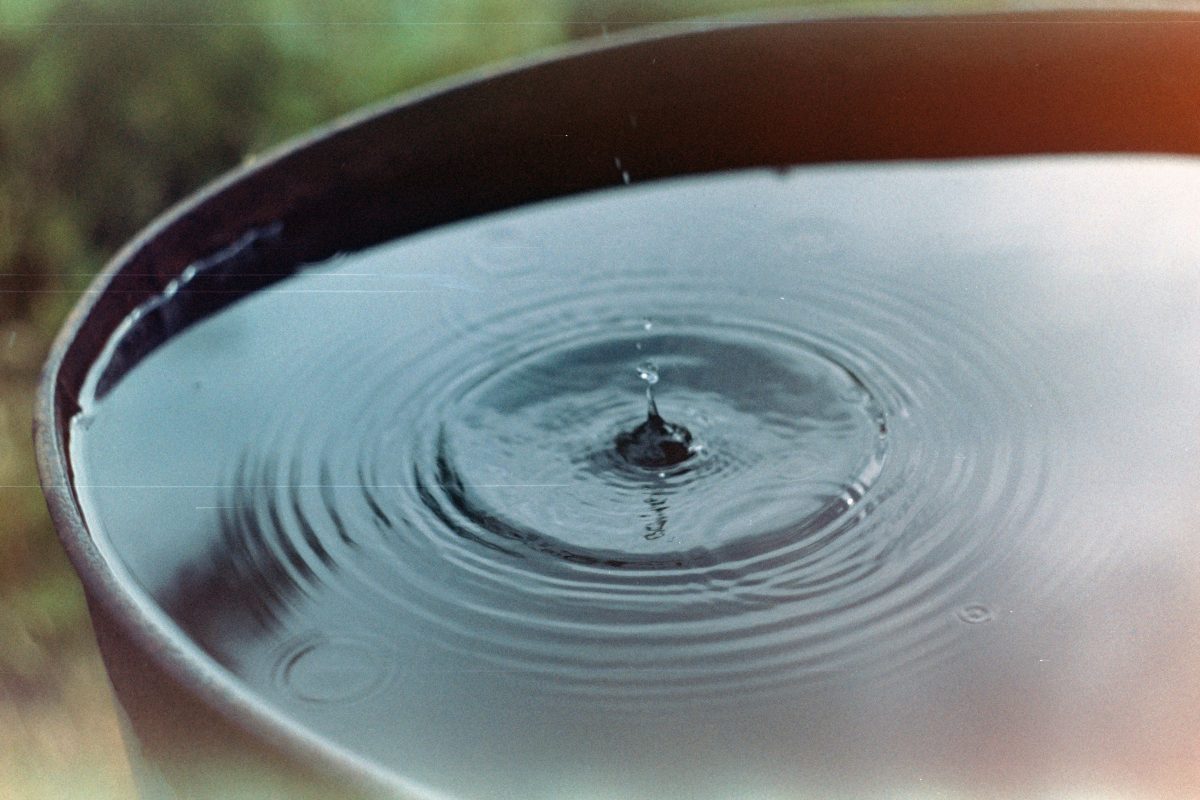
The rainwater harvesting system cost varies based on factors such as the size of the catchment area, the type of storage tank, and the complexity of the system. Some might consider the upfront investment a con, however, it is generally considered a worthwhile investment due to the long-term benefits it offers is a pro.
What are the laws related to rainwater harvesting?
Legal aspects of rainwater harvesting guidelines may vary by location, so it is important to verify local regulations pertaining to water rights and usage to ensure you are not rainwater harvesting illegally. Some areas have specific guidelines or restrictions regarding the collection and use of rainwater.
The legal aspects related to rainwater harvesting can vary depending on the jurisdiction. However, here are some common legal considerations:
1. Water rights: In some areas, water rights are regulated, and individuals or entities may need to obtain permits or licenses to collect rainwater.
2. Building codes: Some jurisdictions have building codes or regulations that dictate the design and installation of rainwater harvesting systems. These codes may outline requirements for storage capacity, filtration, plumbing connections, and system maintenance.
3. Ownership of rainwater: Rainwater ownership can be a legal issue in some places. It is important to understand whether rainwater is considered a communal resource or if individuals have the right to collect and utilize it.
4. Water quality standards: Regulations may exist that establish certain water quality standards for rainwater harvesting systems, particularly when it comes to potable use. These standards may require the use of specific materials, filtration systems, or treatment methods to ensure the water is safe for consumption.
5. Environmental regulations: Rainwater harvesting systems can impact the environment, especially in terms of land use and water drainage. Some jurisdictions may have environmental regulations that govern the construction and operation of such systems to minimize any negative impacts.
6. Tax incentives or rebates: In some areas, there may be tax incentives or rebates available for individuals or businesses that install rainwater harvesting systems. These incentives can encourage the adoption of sustainable water practices and help offset the price of implementation.
It is essential to research and understand the specific laws and regulations in your local area regarding rainwater harvesting to ensure compliance with the legal framework. Consulting with local authorities, water management agencies, or legal professionals can provide more accurate and up-to-date information regarding the legal aspects of rainwater harvesting in your jurisdiction.
How to Use Harvested Rainwater?
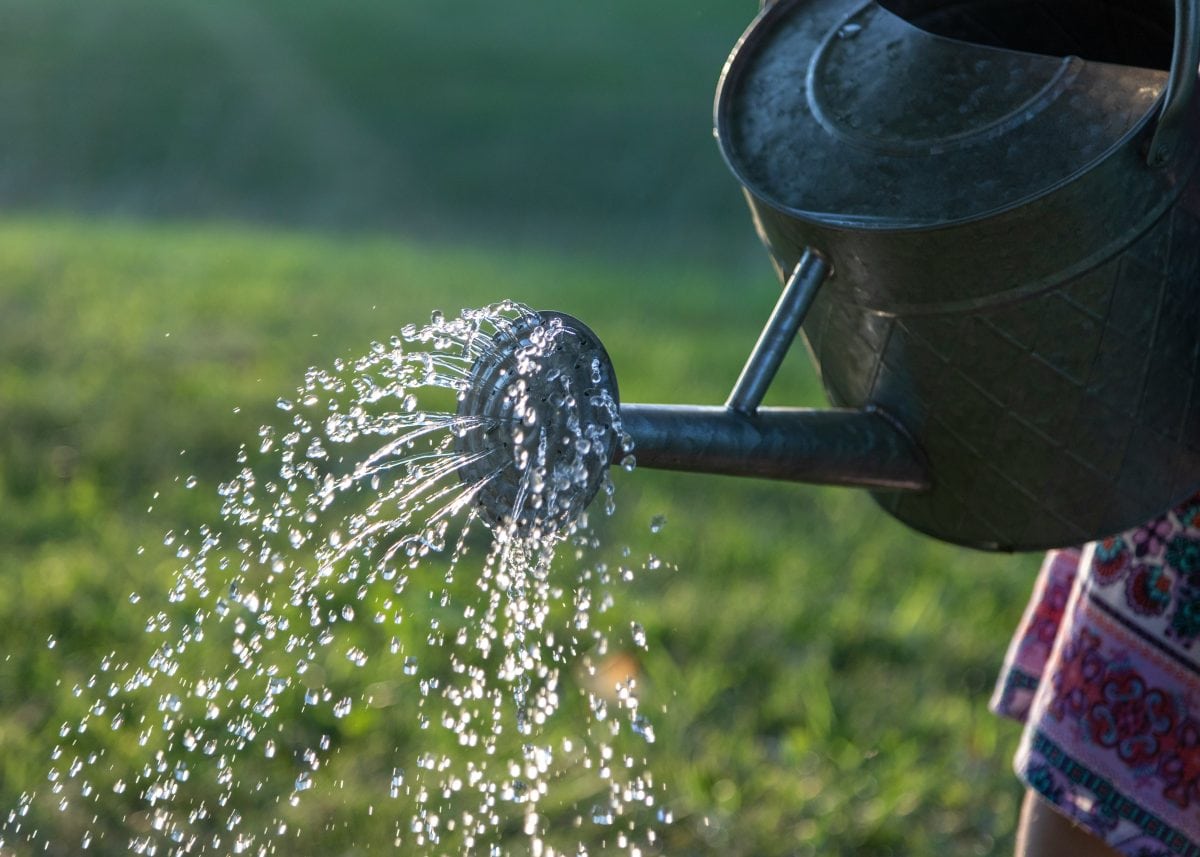
Once harvested, collected rainwater can be used for various purposes, serving as an alternative water supply for domestic, agricultural, and commercial needs.
The rainwater is used for activities such as irrigation, toilet flushing, laundry, and general cleaning, effectively reducing the demand for freshwater sources. Essentially this is free water, by using water water in the tank you can reduce the amount of water you need to purchase.
What are the rainwater harvesting disadvantages?
Some cons of rainwater harvesting may include the initial investment of setting up the system, the need for regular maintenance, and potential contamination issues if proper filtration and storage methods are not employed.
Not all roofs are ideal for water harvesting, some roofs can be toxic or have other issues that would not be good for water collection. Exploring additional considerations for rainwater harvesting encompasses understanding the various systems, estimating water collection capacity, and complying with relevant state regulations.
Ideas to store and filter rainwater for home use?
Storing and filtering rainwater for home use involves using a dedicated storage tank with appropriate filtration mechanisms to ensure the water remains clean and free from contaminants.
1. Rain barrels: Install several rain barrels around the home to collect rainwater from gutters. Place a fine mesh screen on top of each barrel to filter out debris.
2. Rainwater harvesting system: Set up a more sophisticated rainwater harvesting system that includes underground storage tanks. Use a first-flush diverter to divert the initial runoff, which may contain pollutants, away from the storage tank. Install a filtration system to further remove sediment and contaminants before the water is used.
3. Roof gutter filters: Install gutter filters or screens on the roof gutters to prevent leaves and larger debris from entering the rainwater collection system.
4. Sand filters: Use sand filters to remove fine particles and sediment from collected rainwater. These filters can be easily installed in the rainwater storage tanks.
5. UV disinfection: Install a UV disinfection system to kill bacteria and pathogens in the filtered rainwater before it is used for drinking or cooking purposes.
6. Reverse osmosis system: For advanced filtration, consider installing a reverse osmosis system to remove dissolved solids and contaminants from rainwater, making it suitable for drinking.
7. Multiple storage water tanks: Instead of using a single rain barrel or storage tank, consider using multiple tanks connected in parallel. This allows for better flow distribution and more efficient storage capacity.
8. Automated filtration system: Install an automated filtration system that continuously monitors water quality and automatically backwashes or cleans the filters when necessary.
9. Rain garden: Create a rain garden in your yard, designed to capture rainwater from gutters and allow it to slowly infiltrate into the ground. The plants in the rain garden help filter the water and reduce runoff.
10. Drip irrigation system: Connect the filtered rainwater storage system to a drip irrigation system for watering garden beds and plants. This eliminates the need for using tap water for irrigation, conserving fresh water, and reducing utility bills.
Read More: 8 Fun Indoor Activities for Rainy Summer Days
There might be some rainwater harvesting pros and cons, but at the end of the day, you can select the best rainwater harvesting system for your home. Even if you were to only capture the runoff, or passively collect water in a barrel, you will save yourself lots of money over the years and not have to tap into freshwater sources.
WANT TO READ MORE?
8 Tips for Using Rain Barrels: A Guide to a Stunning Eco-Oasis
CONNECT WITH DAILY MOM
💖 NEWSLETTER: DAILY READS IN YOUR INBOX 💖
Sign up to receive our picks for the best things to do, see and buy so you can relax and focus on more important tasks! Let us help you be the best version of yourself you can be!
BE SOCIAL WITH US
📌 LOVE IT? PIN IT!📌




































